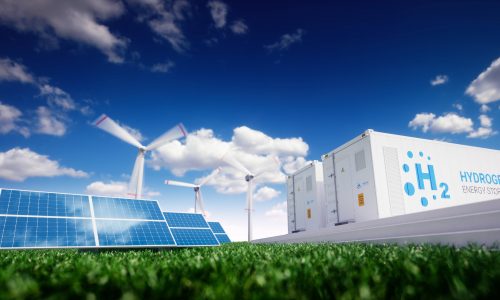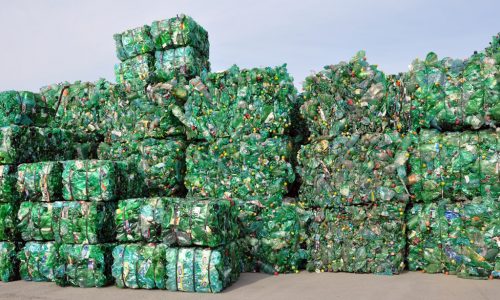Are you aware that many popular household cleaning agents are dangerously toxic? Depending on where you are located, these cleaners could contain Phthalates, Perchloroethylene (PERC), Triclosan, 2-butoxyethanol and many more toxic chemicals. These chemicals are endocrine disruptors, neurotoxic, possible carcinogens. At high levels they can cause respiratory disorders, severe kidney and liver damage, asthma and reproductive disorders.
While it is not possible to completely avoid exposure to such chemicals, it is certainly possible to reduce it significantly. More often than not these chemicals can be swapped for healthier and safer options. In most cases, manufacturers are not aware of its greener replacements.
In this blog, we take you through needs and ways for toxic-free products and their manufacturing.
Why should products and manufacturing processes be toxic-free?
We use a lot of products on a daily basis. These include apparel and textiles, watches and accessories, home and furniture, kitchen utensils and appliances, electronics, packaging materials. These products ensure our well being, bring comfort to our life and protect our health. At the same time, they can harm human health and the environment. Many of these products contain chemicals to which our everyday exposure can cause possible long-term health effects.
Some manufacturers often argue that in small amounts these toxic ingredients aren’t likely to be a problem, but when we’re exposed to them routinely, and in combinations that haven’t been studied, it’s impossible to accurately gauge the risks. While a few products cause immediate reactions from acute exposure (headaches from fumes, skin burns from accidental contact), different problems arise with repeated contact. Chronic exposure adds to the body’s “toxic burden” – the number of chemicals stored in its tissues at a given time.
While not all hazardous chemicals raise the same concerns, certain chemicals cause cancers, affect the immune, respiratory, endocrine, reproductive and cardiovascular systems. Furthermore, they weaken human resilience and capacity to respond to vaccines and increase vulnerability to diseases. Exposure to these harmful chemicals is therefore a threat to human health. In addition, chemical pollution is one of the key drivers putting the Earth at risk, impacting and amplifying planetary crises such as climate change, degradation of ecosystems and loss of biodiversity.
How will we achieve it?
Increasing numbers of governments and organizations around the globe have set out the steps to take to achieve a toxic-free environment. The goal is to ensure that chemicals are produced and used in a way that maximises their contribution to society while avoiding harm to the planet and to current and future generations. New chemicals and materials must be inherently safe and sustainable, from production to end of life. New production processes and technologies must be deployed to allow the chemical industry’s transition to climate neutrality.
Products that contain excessive amounts of restricted substances, such as lead or phthalates, are illegal to import and sell within the respective markets. So regulatory lists compliant products mean that they do not contain restricted substances in amounts above the set limits while those with amounts above the set limits are non-compliant products.
For the last two decades, the European Union has played an important leadership role in tackling the risks hazardous chemicals pose to our health and environment. With REACH (Regulation on the Registration, Evaluation, Authorisation and Restriction of Chemicals), the EU currently already has the strictest chemicals legislation in the world. REACH is an EU regulation restricting chemicals, heavy metals and pollutants in all products. The EU plans to promote safer substitutes or eliminate the need for chemical additives in some products altogether, so they do not end up being circulated indefinitely. These steps have inspired and driven significant changes in the U.S. and elsewhere. Several countries in Asia, including China, the world’s largest chemical producer, have developed their national chemical regulatory programs strongly influenced by the EU’s design.
Despite the success of its current regulatory framework, the EU aims to bring in faster improvements in its fight against the hazardous chemicals. The EU intends to move away from an approach to chemical regulation that depends primarily on tracking down substances that are hazardous only after they’re already being used in products, even when similar to previously restricted substances. Rather, it will focus on prohibiting their use in the first place.
How does a manufacturing industry cope with such regulations?
The EU regulatory framework is increasingly becoming a model for safety standards worldwide. Many countries around the world are following the EU framework as a standard for developing national regulatory programs. That being the case, manufacturing companies need to be a step ahead of the EU’s new Chemicals Strategy for Sustainability agenda presented by the European Commission on 14th October, 2020. This new Chemicals Strategy charts a new long-term vision for the EU’s chemical policy.
Manufacturing companies need to rapidly identify and replace problematic chemicals in their products and manufacturing processes. It will be an ongoing challenge for companies to find new formulations and manufacturing processes that deliver product performance in a cost-effective manner with safer chemical alternatives. Companies who can successfully meet this challenge will be market winners.
For most small and medium-sized enterprises, identifying the key problematic chemicals early during the development stage can make or break the business. Such companies need to be educated and provided with easy to use tools so they can perform regulatory analysis on their product and processes and take the next steps to find replacements very quickly.
Digital solutions such as Simreka can help to significantly speed up the timeline to identify and replace problematic chemicals while meeting product quality and cost-effectiveness goals.
Toxic-free and circular economy at the same time?
A critical barrier to circular production models for many products and materials is contamination with hazardous chemicals – either inadvertently added during sourcing and processing or intentionally added to change the product.
With the toxic-free substances out of the production chain, we not just contribute to protecting the health of customers and reducing toxins in the environment but also towards recycling of end-of-life products which helps conserving materials and reducing wastes.
Are you on the toxic-free train?
It’s time we stop the thousands of contaminants that enter common consumer products and are eventually washed down our drains without treatment. It’s time to stop them from ending up in the water we drink, the fish we eat and other marine life. We at Simreka believe that if manufacturing companies and brands make sure that their products aren’t toxic before they hit the market, the root cause of the problem is already eliminated.
Finally, to help you assess where you stand in this rapidly changing regulatory landscape, we will leave you with some questions to ponder upon. If you have definite positive answers to these questions, you are on the right track and should not be bothered by increasing regulations. If not, we recommend you to start taking steps in this direction. Sooner the better.
How safe are your products? How sustainable is your manufacturing process? Is it toxic-free? Are you sure your products won’t face regulatory actions in certain regions of the world?
Simreka maintains a proprietary database of 100 million chemicals and its properties which keeps growing everyday. Using this database, Simreka’s AI powered algorithm suggests greener, safe and hazard-free alternative chemicals that don’t feature on any regulatory lists. These chemical compliant solutions have helped Simreka’s customers avoid market access issues in different regions of the world saving them millions of dollars in revenue.


